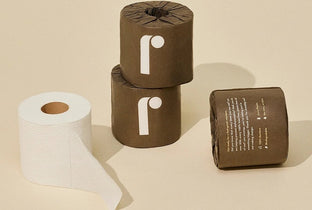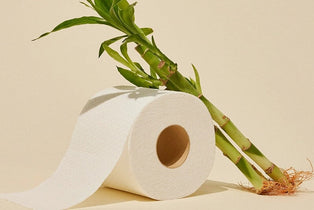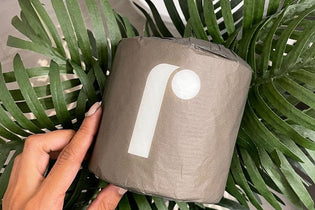
TLDR
As green initiatives and the zero waste movement have risen to the forefront of collective awareness, you’ve likely familiarized yourself with the 3 Rs of recycling—reduce, reuse, and recycle.1 But, as the world continues to consider new ways to live with the health of the planet in mind, a fourth R might be in order.
A similar, but distinct, R of recycling is “repurpose.”
If it’s been a while since you’ve brushed up on your Rs, this guide is for you. We’re breaking down the 4 Rs of recycling in detail—describing each one and providing examples that can help you incorporate each sustainability principle into your everyday life.
When 3 Rs Became 4: A Brief History
The year is 1970. Eight years have passed since the publication of Rachel Carson’s pesticide exposé Silent Spring.2 Americans’ concerns about the state of the environment are only growing in the aftermath of various environmental events, including:
- An oil spill off the coast of Santa Barbara, California, in January 19693
- A spontaneous combustion of the highly polluted Cuyahoga River in June 19694
- The July 1969 Apollo moon landing, which produced some of the world’s first color photos of Earth from space—a photographic reminder to the world that our planet and resources are finite5
Americans wanted answers—and guidance—about what to do to prevent further catastrophes and contend with the scientific discoveries of the space age. Then-Wisconsin Senator Gaylord Nelson organized and promoted the first Earth Day in April 1970, encouraging everyday citizens to pressure the federal government to take environmental action.6
The first Earth Day was a success. Later that year, the US established the Environmental Protection Agency (EPA) to protect the natural world and promote public health, and the agency has been at the helm of environmental regulation ever since.
While the EPA doesn’t claim authorship of the phrase, they incorporated the original 3 Rs—reduce, reuse, and recycle—into their early literature. The phrase stuck, and today’s environmentalists are considering adding a fourth R.
At Reel Paper, we’ve embraced a fourth R that celebrates savvy innovation and resource management—“repurpose.”
Let’s dig deeper into the original three Rs (and the suggested fourth) to help you understand how each principle could play a role in your eco-friendly lifestyle and lead to better waste management.
#1 Reduce
The first R—“reduce”—encourages people to use their available resources wisely and generally decrease the amount of waste material they create.7
Like all of the Rs, “reduce” is broad. What, exactly, should individuals try to reduce in your everyday lives?
By reducing the volume of materials we use (and turn into waste), we can reduce the energy needed to keep up with demand and make a dent in our emissions profile.
Reducing Waste: Examples and Inspiration
So, how can you incorporate the first R—“reduce”—into your everyday life? Here are some ideas:
- Reduce waste by:
- Making more conscious shopping choices, buying only what you need
- Diverting waste from landfills to recycling efforts and other purposes
- Using materials and items completely or for longer before discarding them
- Reduce your energy use by:
- Turning off lights when they’re not in use
- Replacing home appliances and systems with more energy-efficient models
- Switching to alternative energy sources—like solar power—when feasible
- Reduce carbon emissions by:
- Rethinking your commute (e.g., consider carpooling or using public transit)
- Pressuring your elected officials to regulate the world’s largest emitters—just 20 companies around the world are responsible for one-third of all carbon emissions10
#2 Reuse
The second R—“reuse”—describes the process of using a product (especially one designed to be single-use) repeatedly, getting as much life out of it as you can before discarding it.
“Reuse” is similar to the fourth R, “repurpose,” but they’re not the same. When you reuse something, you use it for its intended purpose multiple times; when you repurpose something, you find a new use for it.
Reusing items can produce similar benefits as reducing:
- Reusing items can help you reduce your waste production. The longer you use an item, the more value you get from it before it’s thrown away.
- Learning to reuse can help you save money. Instead of buying (or making) something new after using an item one time, you can reuse it before you replace it.
- Getting more use out of the items and materials you buy can reduce the demand for that item or material, which can decrease the manufacturer’s energy use and carbon emissions.
How to Reuse Materials at Home and Beyond
Reusing is a lot easier than you think—to help inspire sustainable creativity, check out the following examples. You can reuse:
Obviously, these are just a few examples—the constraints of reuse allow for limitless creativity.

#3 Recycle
What does recycle mean? Recycling is similar to reusing—it’s the process of turning an existing material into a new one, typically with help from a local recycling center and materials manufacturers.11
The process is simple:
- You contribute recyclable materials by placing them in your curbside recycling bins or dropping them off at a local recycling center.
- Your municipal trash agency collects, sorts, and cleans the things you recycle to prepare them for further processing.
- Either the same municipal agency or a recycled materials manufacturer manipulates the recyclable materials, preparing them to be made into new products.
Typically, plastic materials are melted and molded into new items, metal is heated and pressed into sheets, and paper is blended into pulp that’s used to make new paper.
Integrate Recycling into Your Routine
It’s easy to start recycling:
- Either order curbside bins from your local recycling or trash pickup agency (they’re typically free) or make your own if you have to drop off your own trash at a transfer station or other facility.
- Read up on the recyclable materials in your area—every recycling center accepts different materials, so make sure you’re collecting and contributing the right items.
- Follow your local regulations for rinsing recyclable containers, removing labels, or any other requirements.
Most importantly, focus on buying items made from recycled materials to close the loop and send a message to manufacturers that items made from recycled materials are preferable to unsustainable alternatives.
#4 Repurpose
Finally, the fourth R—“repurpose”—describes finding a new use for a product before you send it to a landfill or a recycling center.
Repurposing an item requires creativity and innovation—and it combines all of the other sustainability Rs:
- When you repurpose an item, you reduce waste by keeping an item instead of buying a new one.
- Repurposing is a kind of reuse—but, instead of using an item for its original purpose, you’re using it for an entirely different purpose.
- While you’re not melting, pressing, or pulping anything, repurposing is a kind of recycling. Without manipulating it, you’re turning an existing item into something new.

Repurposing Materials: Inspiration and Examples
Like reusing, repurposing materials can be fun! Here are some ideas for repurposing everyday items to help you get started:
- Once you’re done with a half-gallon plastic jug, cut off a portion of the top (leaving the handle) to make a scoop for pet food, ice, or dry goods.
- Use your plastic grocery bags as trash can liners or use them to pick up after your pet.
- When you replace your plastic toothbrush, add it to your household cleaning kit. Use it to scrub grout or tight corners.
- Save the packing materials from your online shopping boxes and use them as filler for gift baskets.
- Set aluminum and tin cans aside, and pour spent cooking oil into them for easy disposal.
- When you’ve grown tired of a shirt or a dress, use the fabric to make a pillow case, or use multiple items to make a quilt.
Using the 4 Rs to Make Reel Change
Incorporating the 4 Rs into your life can help you make more environmentally-conscious choices. But, it can also inspire you to become an innovator—when you think of a new use for a single-use water bottle or empty can, you prevent waste and flex your creative muscles.
Finding creative, eco-friendly solutions to everyday problems is what we’re all about at Reel Paper. Just like you, we rely on single-use paper products—but, we don’t think continuing to clear the world’s forests to make disposable products is the answer.
That’s why we developed our bamboo paper towels and bamboo toilet paper. Bamboo is one of the fastest-growing plants, and bamboo harvested for paper can grow back in 3-5 years. Plus, it shares many qualities with hardwood trees—it sequesters lots of carbon and produces durable, soft paper products.
If you’re ready to make Reel Change, join us as we revolutionize the paper product industry. Find our bamboo products in-store or shop online.
Sources:
- US Environmental Protection Agency. Reduce, Reuse, Recycle. https://www.epa.gov/recycle
- US Environmental Protection Agency. The Origins of EPA. https://www.epa.gov/history/origins-epa
- National Public Radio. How California’s Worst Oil Spill Turned Beaches Black and the Nation Green. https://www.npr.org/2019/01/28/688219307/how-californias-worst-oil-spill-turned-beaches-black-and-the-nation-green
- Smithsonian Magazine. The Cuyahoga River Caught Fire at Least a Dozen Times, but No One Cared Until 1969. https://www.smithsonianmag.com/history/cuyahoga-river-caught-fire-least-dozen-times-no-one-cared-until-1969-180972444/
- The Atlantic. Apollo 11 Moon landing: Photos from 50 Years Ago. https://www.theatlantic.com/photo/2019/07/apollo-11-moon-landing-photos-50-years-ago/594448/
- Library of Congress. Earth Day. https://www.loc.gov/item/today-in-history/april-22/
- US Environmental Protection Agency. Reducing and Reusing Basics. https://www.epa.gov/recycle/reducing-and-reusing-basics
- US Energy Information Administration. US Energy Facts Explained. https://www.eia.gov/energyexplained/us-energy-facts/
- US Environmental Protection Agency. Overview of Greenhouse Gasses. https://www.epa.gov/ghgemissions/overview-greenhouse-gases
- The Guardian. Revealed: The 20 Firms Behind a third of All Carbon Emissions. https://www.theguardian.com/environment/2019/oct/09/revealed-20-firms-third-carbon-emissions
- US Environmental Protection Agency. Recycling Basics. https://www.epa.gov/recycle/recycling-basics




0 comments